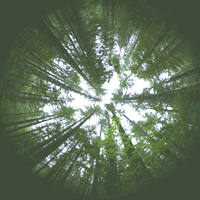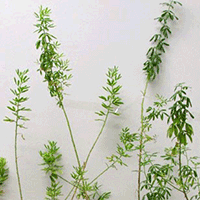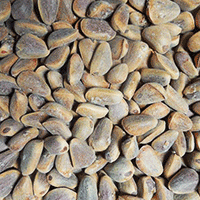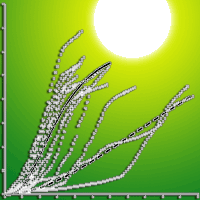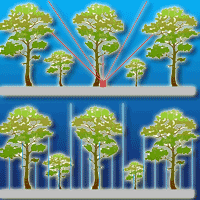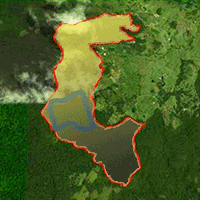
Distribution of juveniles of tree species along a canopy closure gradient in a tropical cloud forest of the Venezuelan Andes
Ana Quevedo-Rojas (1) , Mauricio Jerez-Rico (2), Teresa Schwarzkopf Kratzer (3), Carlos García-Núñez (3)
iForest - Biogeosciences and Forestry, Volume 9, Issue 3, Pages 363-369 (2015)
doi: https://doi.org/10.3832/ifor1568-008
Published: Dec 08, 2015 - Copyright © 2015 SISEF
Research Articles
Abstract
Cloud forests represent a minor portion of the world forests, though outstanding in terms of biodiversity, endemisms, and environmental services provided. Understanding the factors that drive the regeneration and species composition of these forests, and in particular how light availability affects the patterns of juvenile tree distribution in the understory, is critical for conservation and restoration programs. In this study, we determined the range-size and overlap of the abundance distribution of juveniles for 20 tree species in an Andean tropical cloud forest in Venezuela along a gradient of percentage canopy openness (%CO) used as a surrogate of light availability. The observed distribution of %CO was then compared with a bounded null model of community structure in order to test light partitioning as a driver of tree species’ coexistence. We measured %CO using hemispherical photography and the abundance and size of juvenile trees in 280 plots of 1-m radius spread over a 32 ha forest area. The distribution of sites was skewed towards the lower end of the %CO gradient (0.5 to 12.8%), while species abundance sharply diminished at both ends of the gradient. Nevertheless, 15 out of 20 species had a non-random distribution in relation to %CO, with many species concentrated near the lower side of the gradient. The observed pattern of species’ overlap was within the 95% confidence limits for the average overlap expected under the bounded null model. These patterns indicate that low canopy openness is the rule in this forest, in spite of the scattered tree-fall gaps, and suggest that light partitioning does not determine the tree community structure at the juvenile stage. High redundancy in light requirements among juveniles of tree species may have a positive effect on species coexistence in cloud forests, thus maintaining a high species diversity. However, other factors such as recruitment limitation and differential growth/carbon-gain among species at the juvenile stage along the light gradient could contribute to the high diversity of these ecosystems.
Keywords
Natural Regeneration, Light Availability, Understory, Shade Tolerance, Hemispherical Photography, Null Models
Authors’ Info
Authors’ address
Facultad de Ciencias Forestales y Ambientales, Escuela Técnica Superior Forestal (ETSUFOR), Universidad de Los Andes (ULA), Conjunto Forestal, Mérida (Venezuela)
Facultad de Ciencias Forestales y Ambientales, Centro de Estudios Forestales y Ambientales de Postgrado (CEFAP), Universidad de Los Andes, Conjunto Forestal, Mérida (Venezuela)
Carlos García-Núñez
Facultad de Ciencias, Instituto de Ciencias Ambientales y Ecológicas (ICAE), Universidad de Los Andes, Conjunto Forestal, Mérida (Venezuela)
Corresponding author
Paper Info
Citation
Quevedo-Rojas A, Jerez-Rico M, Schwarzkopf Kratzer T, García-Núñez C (2015). Distribution of juveniles of tree species along a canopy closure gradient in a tropical cloud forest of the Venezuelan Andes. iForest 9: 363-369. - doi: 10.3832/ifor1568-008
Academic Editor
Arthur Gessler
Paper history
Received: Jan 19, 2015
Accepted: Jul 31, 2015
First online: Dec 08, 2015
Publication Date: Jun 01, 2016
Publication Time: 4.33 months
Copyright Information
© SISEF - The Italian Society of Silviculture and Forest Ecology 2015
Open Access
This article is distributed under the terms of the Creative Commons Attribution-Non Commercial 4.0 International (https://creativecommons.org/licenses/by-nc/4.0/), which permits unrestricted use, distribution, and reproduction in any medium, provided you give appropriate credit to the original author(s) and the source, provide a link to the Creative Commons license, and indicate if changes were made.
Web Metrics
Breakdown by View Type
Article Usage
Total Article Views: 51157
(from publication date up to now)
Breakdown by View Type
HTML Page Views: 43636
Abstract Page Views: 2651
PDF Downloads: 3613
Citation/Reference Downloads: 15
XML Downloads: 1242
Web Metrics
Days since publication: 3683
Overall contacts: 51157
Avg. contacts per week: 97.23
Citation Metrics
Article Citations
Article citations are based on data periodically collected from the Clarivate Web of Science web site
(last update: Mar 2025)
Total number of cites (since 2016): 2
Average cites per year: 0.20
Publication Metrics
by Dimensions ©
Articles citing this article
List of the papers citing this article based on CrossRef Cited-by.
References
Aberturas del dosel y espectro de la luz en el sotobosque de una selva nublada andina de Venezuela [Canopy gaps and understory light spectrum in a Venezuelan Andean cloud forest]. Ciencia 9: 165-183. [in Spanish]
Gscholar
Heterogeneidad estructural y lumínica del sotobosque de una selva nublada andina de Venezuela [Light and structural heterogeneity in the understory of a Venezuelan Andean cloud forest]. Interciencia 28: 394-403. [in Spanish]
Gscholar
Venezuela. In: “Bosques Nublados del Neotrópico” (Kappelle M, Brown A eds). INBio, Costa Rica, pp. 397- 442. [in Spanish]
Gscholar
Introducción a los bosques nublados del neotrópico: una síntesis regional. In: “Bosques nublados del neotrópico” (Kappelle M, Brown A eds). INBio, Costa Rica, pp. 697. [in Spanish]
Gscholar
Distribution, size and dynamics of canopy gaps in a cloud forest of the Ibitipoca range, southeastern Brazil. In: “Life forms and dynamics in tropical forest” (Gottsberger G, Liede S eds). Dissertationes Botanicae, Berlin-Stuttgart, Germany, pp. 29-39.
Gscholar
Functional groups diversity and responses to disturbance. In: “Biodiversity and Ecosystem Processes in Tropical Forests” (Orians G, Dirzo R, Cushman JH eds). Springer-Verlag, Berlin, Germany, vol. 122, pp. 127-151.
Gscholar
Gap light analyzer (GLA), version 2.0: imaging software to extract canopy structure and gap light transmission indices from true-color fisheye photographs, user manual and program documentation. Simon Frazer University, Burnaby, British Columbia, Canada, and Institute of Ecosystem Studies, Millbrook, New York, USA, pp. 34.
Online | Gscholar
La luz solar: consecuencias biológicas y su medición [Sun light: biological consequences and its measurement]. In: “Ecología y Conservación de Bosques Neotropicales” (Kattan G, Guariguata MR eds). Libro Universitario Regional, EULAC-GTZ, Costa Rica, pp. 119-143. [in Spanish]
Gscholar
Génesis de una secuencia de suelos en el Bosque Experimental San Eusebio, La Carbonera, Estado Mérida [Genesis of a soil sequence in the San Eusebio Experimental Forest, La Carbonera, Mérida State]. Revista Forestal Venezolana 32: 133-150. [in Spanish]
Gscholar
Pearcy RW (2007) Responses of plants to heterogeneous light environments. In: “Functional Plant Ecology (2nd edn)” (Valladares F, Pugnaire F eds). Marcel Dekker, New York, USA, pp. 370-305.
Gscholar
Dinámica sucesional del componente arbóreo luego de un estudio destructivo de biomasa en el Bosque Universitario San Eusebio, Mérida Venezuela [Arboreal component succesional dynamics after a destructive study of biomass, in San Eusebio University Forest, Mérida-Venezuela]. Revista Forestal Venezolana 51: 35-46. [in Spanish]
Gscholar
Mapa de vegetación escala 1:5000 y visualización tridimensional de la Estación Experimental San Eusebio por medio de sistemas de información geográfica y animaciones virtuales [Vegetation map 1:5000 scale and tridimensional visualization of the San Eusebio Experimental Station through a geographic information system and virtual animations]. Master Thesis, Centro de Estudios Forestales y Ambientales de Postgrado, Universidad de Los Andes, Mérida, Venezuela, pp. 51. [in Spanish]
Gscholar
Biophysical characterization of cloud forest vegetation in the Venezuelan Andes. Ph.D. Thesis, Cornell University, Ithaca, NY, USA, pp. 173.
Gscholar
Ecología de la vegetación tropical [Tropical vegetation ecology]. Sociedad Venezolana de Ciencias Naturales, Caracas, Venezuela, pp. 306. [in Spanish]
Gscholar

